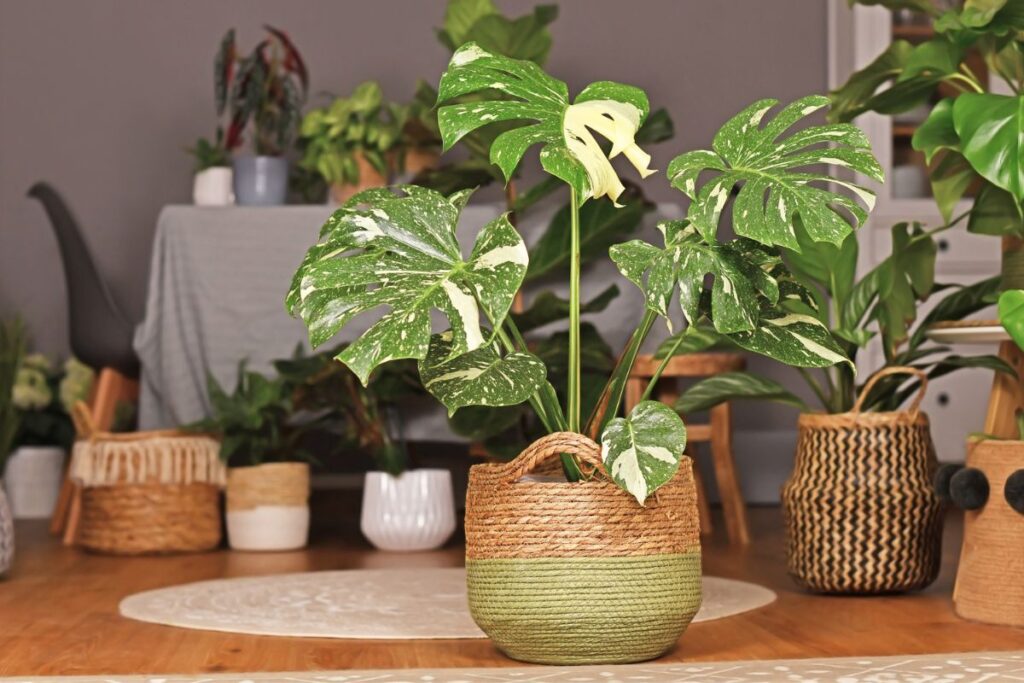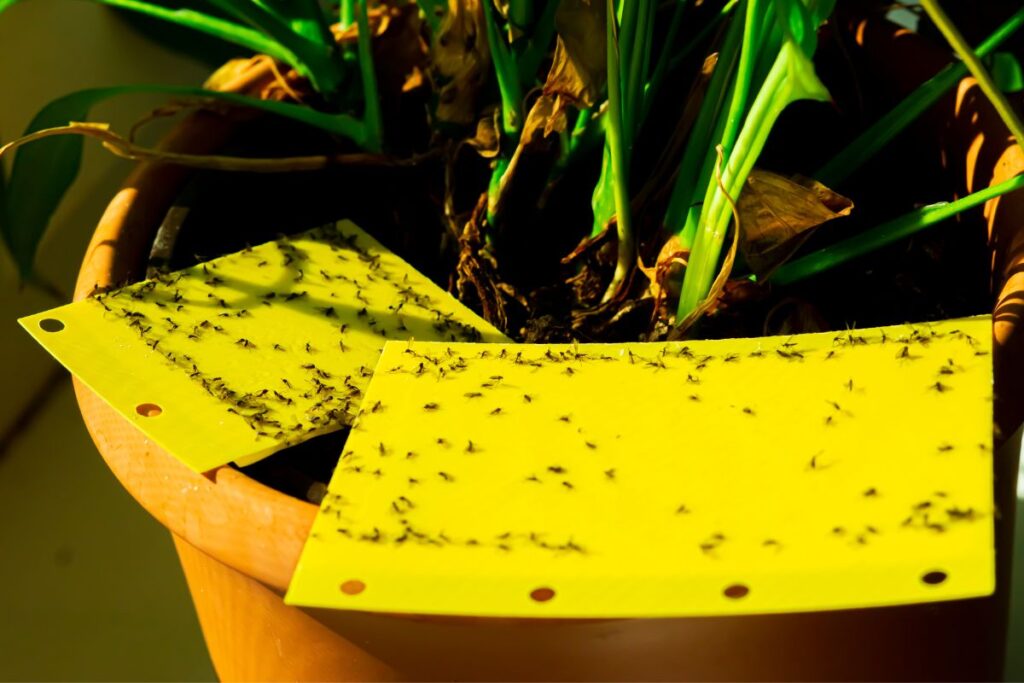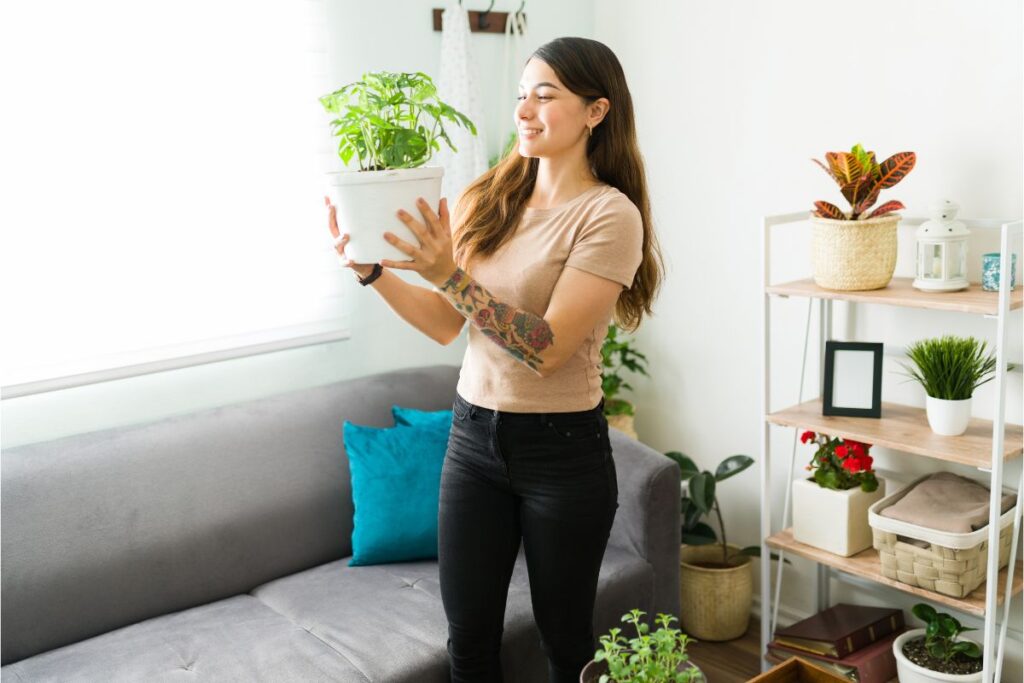Do you have a green thumb but are concerned that your indoor plants could be inviting pests into your home? You’re not alone. Many people wonder if their houseplants come with some unwanted guests. The answer is yes; indoor plants can attract bugs and other pests. Don’t worry though, there are simple steps you can take to keep the creepy crawlies away from your beloved greenery. In this article, we’ll explore why indoor plants attract bugs and which kinds of insects they might draw in, as well as how to protect them from infestations.

Contents
Why Do Indoor Plants Attract Bugs?
Lack Of Air Circulation
Lack of air circulation in an indoor space can cause bugs to congregate, so it’s important to ensure your plants get enough airflow. To create a healthy atmosphere for your plants and keep away unwanted critters, make sure that you are providing them with a well-ventilated environment. This can be done by opening windows or adding fans to increase airflow in the room. Not only will this keep your plants happy and healthy but it will also help reduce the number of bugs inside your home.
Standing Water
Standing water is not only unpleasant but also dangerous for your indoor plants. It serves as a breeding ground for harmful pests that can quickly spread throughout your home if left unchecked. Overwatering your houseplants can lead to stagnant pools of water, especially when they are in pots with trays. These pools of stagnant water provide the perfect habitat for many common houseplant pests and diseases that could quickly spread throughout the rest of your plants if not addressed immediately.
Standing water also makes it easier for bacteria and fungi to grow which could cause further damage to your plants. To avoid these issues altogether, practice proper pest control by making sure you are not over-watering your houseplants or leaving standing water near them.
Related Post:
Are Self-Watering Pots Good For Indoor Plants?
High Humidity
High humidity in your home can create a breeding ground for pests and put your plants at risk. Pests such as mites and aphids thrive in environments with high humidity and can cause damage to your indoor plants.
Therefore, it is important to maintain the right levels of humidity in your home to prevent these issues from occurring. You can use a dehumidifier or air conditioner to regulate the humidity levels and protect your home and indoor plants.
Which Bugs Do Indoor Plants Attract?
You may have noticed small, flying insects around your indoor plants. These could be whiteflies, scales, fungus gnats, aphids or thrips. While these bugs can be annoying, it is important to know what kind of bug you’re dealing with in order to properly treat the issue. In this discussion, we will dive into each bug and learn how to identify them so that you can keep your indoor plants looking their best.
Whiteflies
Whiteflies can quickly swarm your beloved houseplants, wreaking havoc on their delicate foliage and leaving you feeling hopeless. These are tiny flying insects that feed off of plant sap, leaving the leaves yellowed and the plant weakened.
Fortunately, there are steps you can take to prevent whitefly infestations in your home plants. Proper plant nutrition, pest control methods, soil health maintenance, light levels and temperature control all contribute to a healthy environment for your houseplants and help ward off these pesky bugs. Keep an eye out for whitefly activity if you notice any changes in your plants’ health or appearance so that you can address the issue promptly before they become a bigger problem.
Scales
Scales are an annoying pest that can quickly make your houseplants’ foliage look unsightly. They are one of the most common outdoor pests and get into indoor plants by flying in through open windows or doors, hitching a ride on clothing, or even from other infested plants. Scales feed on plant sap and can weaken the plant over time, which can affect its ability to take up nutrients, leading to yellowing or dropping leaves. If left unchecked, scales can develop large colonies that become difficult to control.
The best way to avoid scale infestations is with proper prevention techniques such as avoiding bringing outdoor plants indoors, cleaning off dirt before repotting plants and regularly inspecting your houseplants for signs of scale activity. Insecticides may be used if necessary; however, there are also natural repellents available to help reduce scale populations and soil mites that may encourage them. Taking these steps will help keep your houseplants looking their best and free from pesky pests like scales!
Fungus Gnats
Fungus gnats are tiny pests that can be a real headache, often showing up when you least expect them. Preventative measures are the best way to keep these pests away from your indoor plants. Check the soil quality regularly and make sure it’s not overly moist or too dry.
If you do find fungus gnats in your plants, there are a few ways to get rid of them. One option is to let the soil dry out completely before watering your plants again. You can also purchase sticky traps or nematodes, which are microscopic worms that feed on the larvae of fungus gnats. Additionally, using a natural insecticide like neem oil can also help to control the population of these pests. It’s important to act quickly when dealing with fungus gnats, as they can quickly multiply and cause damage to your plants.

Aphids
Aphids can be a major nuisance, so don’t let them ruin your gardening fun! When it comes to indoor plants, environmental factors such as temperature and humidity can play an important role in the presence of aphids. Fortunately, there are numerous pest prevention strategies that you can use to minimize their presence. Here are four key steps for managing aphids on indoor plants:
- Use natural remedies such as neem oil or insecticidal soap to eliminate existing outbreaks.
- Introduce beneficial insects like ladybugs and green lacewings which prey on aphids.
- Practice cultural practices such as maintaining healthy soil moisture levels and keeping plants free of debris where pests may hide.
- Monitor your indoor environment regularly for any signs of infestation and take necessary action promptly if needed.
With proper pest prevention techniques, you’ll be able to enjoy your indoor plants without having to worry about pesky aphid infestations!
Thrips
Thrips are tiny insects that feed on the sap of plants and can cause damage to leaves, flowers, and fruits. They are difficult to detect as they are only about 1-2mm in size and often hide in crevices and under leaves. The first signs of a thrips infestation are usually silver or brown speckles on the leaves, distorted growth, and black fecal spots on the undersides of the leaves. If left untreated, thrips can cause stunted growth and eventually kill the plant.
To prevent thrips from infesting your indoor plants, regularly inspect them for signs of damage and use natural or chemical insecticides to control the population. It’s important to establish a preventive spray routine and clean up fallen leaves and debris that attract them. Additionally, make sure plants are getting adequate light exposure, as this will help prevent an infestation from occurring. With a little effort and attention, you can keep your garden healthy and thriving all season long.
Mealybugs
Between thrips and mealybugs, there is one thing they have in common: both are unwelcome pests that can damage plants. Mealybugs can be especially problematic for indoor plants since they feed off their sap and cause discoloration or wilting. To prevent an infestation, it’s important to understand potential solutions, natural remedies, and preventive measures.
One of the best ways to fight mealybugs is through regular cleaning and inspection. It’s important to keep your indoor plants clean by wiping down leaves with a damp cloth to remove any eggs or larvae that may be present on the surface. You should also use a pesticide or insecticide if necessary – but only after trying out some natural remedies such as neem oil and horticultural oils first.
Spider Mites
You’ll want to watch out for spider mites, as they can quickly infest your houseplants and cause significant damage. Spider mites are small arachnids that feed on the sap in the leaves of plants, leaving them yellowed and spotted. They reproduce quickly and can easily spread to other plants, making it important to treat an infestation as soon as possible. Signs of spider mites include tiny webs on leaves and stems, as well as yellow or white speckling on the leaves.
To prevent spider mites, make sure to keep your plants well-watered and misted, as dry conditions can attract them. If you do notice an infestation, you can try spraying your plants with a mixture of water and dish soap, or use a commercial insecticide specifically designed for spider mites. Regularly inspecting your plants and taking preventive measures can help keep them healthy and free from spider mites.
How To Keep Indoor Plants From Bugs
To protect your indoor plants from bugs, you need to know the right steps. Maintaining the proper indoor humidity level is important as this can discourage pests and encourage beneficial insects that will help keep pests away. You can also use natural pest control methods such as spraying a mixture of water and dish soap. Additionally, make sure to aerate the soil every few months by turning it over with a spoon or garden trowel and remove any dead leaves, stems and flowers as these provide food for unwanted guests. Lastly, keeping your plants clean is essential for preventing bug infestations as this removes any eggs that may be present on the surface of the plant.
By following these tips, you can ensure that your indoor plants stay healthy and free from pesky critters! If you notice signs of an insect infestation like webbing or holes in the foliage, don’t wait – take action immediately to prevent further damage from occurring. Regularly inspect your plants for signs of trouble so that you can quickly address any issues before they become too serious. With a little bit of care and attention, your indoor plants will flourish without fear of being eaten by bugs!

Conclusion
So, do indoor plants attract bugs? The answer is yes. Unfortunately, they do. But that doesn’t mean you have to give up your houseplants. There are steps you can take to keep bugs away from your beloved plants. Regularly monitoring your plants, keeping the area clean, and using natural repellents are all easy ways to reduce the risk of bug infestations in your home. With a little bit of effort, you can ensure that both you and your plants stay happy and healthy!
